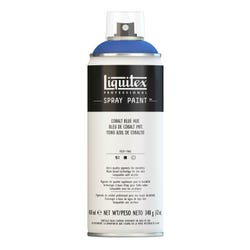Fabric Design: Creating Accent Pillows
.jpg)
Description
Lesson Plan and Artwork by Joe Culotta
Fabric painting, both as an art form and way of design, is thousands of years old, dating back to 3000 B.C. Early examples of fabric art found in Peru date back to 200 B.C. These techniques obviously have changed with use of Liquitex® products.
Objectives
- Students will research the history of fabric design.
- Students will create an original design to paint a designer pillow as an accent piece.
- Students will decide how the fabric design will be incorporated as an accent piece.
Supplies Needed
Liquitex® Professional Ink Essentials, Assorted Colors, 1 oz. bottle, Set of 6
Liquitex® Professional Acrylic Ink, Metallics, Set of 6
Liquitex® Professional Spray Paint, Iridescent Antique Gold, 400ml
Liquitex® Professional Spray Paint, Cobalt Blue, 400ml
Liquitex® Titanium White Spray Paint
Liquitex® Paint Markers, Assorted Colors, Set of 6
*Here are the supplies needed for this lesson plan for reference. Find a convenient carousel of shoppable products for this lesson below.
Standards
Standard #1: Generated and conceptualize artistic ideas and work.
Standard #3: Refine and compete artistic work.
Standard #8: Interpret intent and meaning in artistic work.
Instructions
1
Ask students to research fabric painting and discuss some of the early origins and techniques used.
2
Discuss how Interior Designers use pillows as accent pieces in their designs to bring out color, line and pattern.
3
Students should sketch out and determine the design to be used on their pillow. The design chosen will help determine the size and shape of the pillow.
4
Wash unprimed canvas to remove any sizing in the material. Allow to air dry and then cut the washed canvas to the size needed. Keep in mind this canvas will be sewn to a backing and stuffed with batting or a pillow form. Allow extra material on each side of the piece for this process. Press and tape canvas to a board.
5
Demonstrate how to use Liquitex® Spray Paints on unprimed canvas. Have students practice prior to starting on their final piece. This will cut down on the margin of error.
6
Students will use Liquitex® Spray Paint to create the background of their pillow design. Once applied and allowed to dry students can then utilize Liquitex® Paint Markers with precision nibs to draw in their design details.
7
After the pillow top has been completed and allowed to dry, a backing will need to be sewn onto the pillow top. This can be done by hand or machine. Students can use plain canvas or a colored fabric to enhance their design. An envelope backing is the easiest style to use. Pillows can be stuffed with batting to complete their shape or slip over a commercial pillow form.
Note: These pillow are for decoration and not for use as a sleeping pillow.







